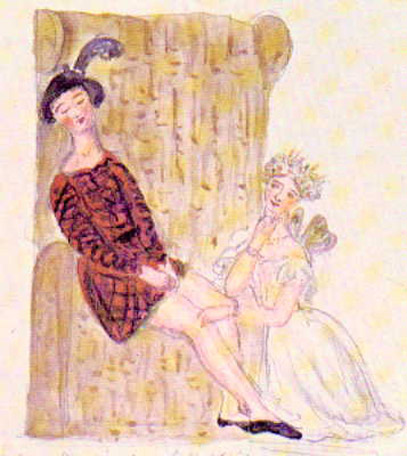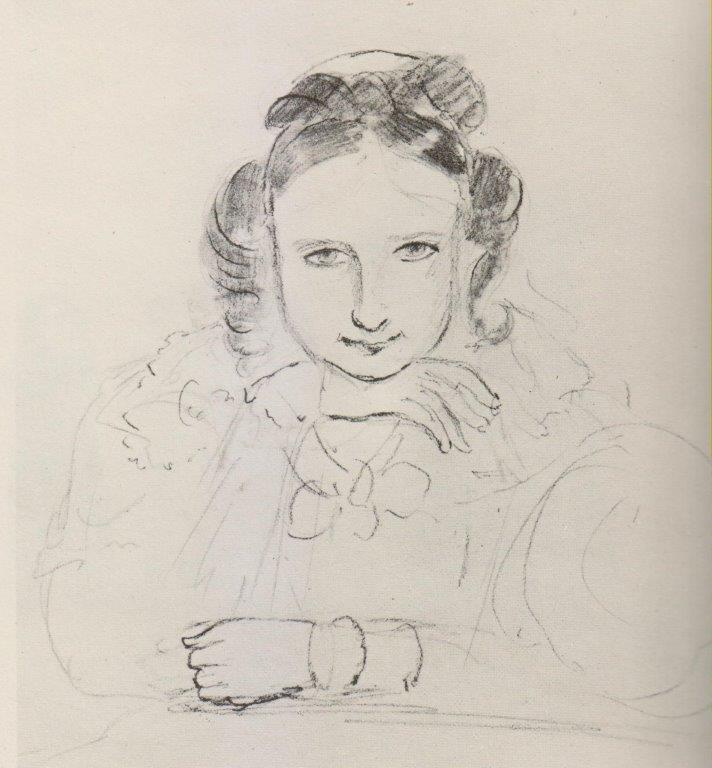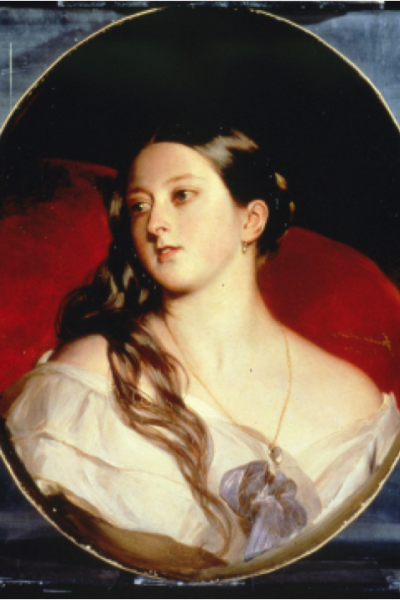Young Queen Victoria and the Arts
“I WAS MOST EXCESSIVELY DELIGHTED”
THIS PHRASE RECURS OVER AND OVER AGAIN in the engaging journals of Princess Victoria, often in connection with the arts. Taught from the age of eight by artist Richard Westall, later by others including Edward Lear, throughout her life Victoria sketches and paints with much enjoyment, and with a true eye for colour and form.
YOUNG VICTORIA IS NATURALLY MUSICAL.. The year before her accession to the throne she begins singing lessons with the operatic bass Luigi Lablache, whom she adores and with whom she sings many a duet from her favourite Italian operas. These lessons continue for the next twenty years, and the Queen’s voice is genuinely admired by Felix Mendelssohn. “She sang with very nice feeling and expression and the last long C I have never heard better, or purer or more natural”
IN THE WORLD OF OPERA she admires Giulia Grisi, greatest soprano of her day and beautiful into the bargain. (Together with a keen eye, Victoria has a passion for beauty in all forms.) Much later she will enjoy music by Wagner, in particular LOHENGRIN.

Sketch by Princess Victoria, 1832, Royal Collection

Sketch by Princess Victoria, 1832, Royal Collection
YOUNG VICTORIA DELIGHTS IN THE BALLET in its full romantic flowering. She worships the celebrated Marie Taglioni, first ballerina to dance on points and to wear the knee-length ballet skirt.
AMONG HER FAVOURITE PERFORMERS IN THE THEATRE are the actress-impresario Lucia Elizabeth Vestris and her comedian husband, Charles James Mathews the Younger “the most delightful and amusing actor possible”. The Queen remains their loyal supporter, and in later years would often invite them to perform at Windsor.
ON HER ACCESSION TO THE THRONE, Victoria retains her enthusiasms, visiting the theatre, ballet and opera (often combined in an evening’s entertainment) several times a week. On occasion she drags with her a reluctant Lord Melbourne, whose idea of a good evening is to lounge about on a sofa. He is however, a rich source of theatrical gossip from the previous generation, which the young Queen records faithfully in her journal.
IN THE ROYAL LIBRARY AT WINDSOR are many delightful watercolours and sketches drawn by Victoria from her vantage point in the Royal Box at Drury Lane, of her favourite performers, scenes and characters in opera, ballet and theatre. There are drawings, too, of those around the Princess, often of her beloved governess Louise Lehzen, together with revealing sketches of herself.
THE QUEEN’S MARRIAGE TO PRINCE ALBERT brings with it a wider and deeper involvement in all the arts.
The Queen still lives in her letters, diaries, sketches and watercolours.
With paintings and sketches by Queen Victoria from the Windsor Archives, together with other paintings, portraits and cartoons of the early 19th century.
This talk has been presented at numerous branches of The Arts Society, in England, Australia and New Zealand and at festivals in this country. “Ebullient and intelligent … accomplished actress and knowledgeable historian” from the Newbury Festival review.
A YOUNG WOMAN IN LOVE WITH LIFE
“”I WAS MOST EXCESSIVELY DELIGHTED” was the intriguing title of a lecture at the Corn Exchange on Tuesday morning, given by an ebullient and intelligent Karin Fernald about the artistic life of Queen Victoria.
The lecture was illustrated with slides of drawings and paintings about and executed by the young princess, later Queen.
Karin, an accomplished actress and knowledgeable historian, delivered the lecture with wit and evident delight, taking us deftly through the minefield of Saxe-Coburg and Orange dynasties to show us the talented Victoria’s flowering as an artist.
Her poignant, delicate pencil self-portraits showed an acute observation of nature. With expert tuition from several prominent painters of the day, including Edward Lear, she learns the very English art of watercolour and makes many sketches and paintings of her experiences and surroundings.
A fervent lover of the ballet, opera and the circus, she faithfully records the costumes worn and the scenes performed by painting and drawing these at home the next day from memory.
I was waiting with enormous anticipation for the portraits of Victoria by Franz Winterhalter, which give such a gentle, natural look to the princess in love. I was not disappointed, and towards the end they came up on the screen and encapsulated all that the lecture had been about – a lovely, talented young artist, flourishing and experiencing all around her.”

Queen Victoria
Franz Xavier Winterhalter 1842 Royal Collection